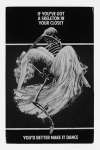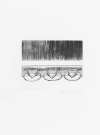Jim
Dine
Jim Dine, a pivotal figure in the Pop Art movement, is celebrated for his bold, emblematic heart motifs and autobiographical themes. If you’re looking for original Jim Dine prints and editions for sale or would like to sell, request a complimentary valuation and explore our network’s most in-demand works.
Jim Dine art for sale
Discover Jim Dine prints for sale, exclusively available through our private network of collectors. Explore signed and unsigned screenprints, lithographs, digital prints, and rare editioned proof prints by era-defining blue chip artists.
Sell Your Art
with Us
with Us
Join Our Network of Collectors. Buy, Sell and Track Demand
Biography
Jim Dine is a versatile artist who shaped the Post-War American art scene. With a career spanning over six decades, Dine has established himself through his repeated use of personal iconography and his contributions to the development of Pop Art. Though often associated with this movement, his oeuvre defies easy categorisation, as it encompasses elements of Neo-Dada, Abstract Expressionism and Conceptual Art.
Born in Cincinnati, Ohio, in 1935, Dine exhibited a passion for art from an early age. He attended the University of Cincinnati and the Boston Museum School before receiving his BFA from Ohio University. Dine's early works were characterised by a combination of painting and performance, and he was a pioneer in the Happening movement alongside Claes Oldenburg and Allan Kaprow, where art and life experiences were combined in a theatrical form of artistic expression.
As Dine's art evolved, he began to incorporate everyday objects into his canvases, a practice that became a hallmark of his style. He would often attach items such as tools, ropes, or shoes to his paintings, blurring the lines between painting and sculpture, and between the artwork and the real world.
Dine's artistic development is marked by several key periods. In the 1960s, he became closely associated with the Pop Art movement, creating a series of works that featured everyday objects and consumer goods. However, unlike his contemporaries, Dine's approach was more autobiographical and expressive. His work reflects a preoccupation with personal symbolism and the emotional power of objects familiar to him, themes that would recur throughout his career.
In the 1960s, Dine began producing his Heart series, with the symbol becoming one of his most enduring motifs. These works, often large in scale, feature the heart as a central symbol, reflecting Dine's exploration of identity and symbolism. Dine’s lithographic work titled Carnegie Heart, depicting a central heart in gestural lines and bold colour, exemplifies how the medium sensitively lends itself to the striking liveliness of Dine’s approach.
Throughout his career, Dine has exhibited his work widely, with major solo exhibitions at prestigious institutions such as the Whitney Museum of American Art, the Museum of Modern Art in New York, and the Centre Pompidou in Paris. His contributions to the art world have been recognised with numerous awards, including the Commandeur de l'Ordre des Arts et des Lettres in France.
































